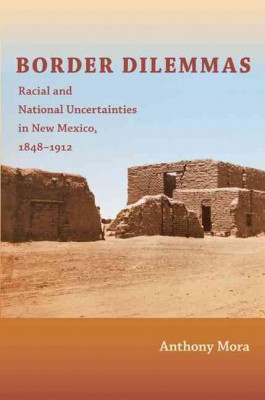| Border Dilemmas: Racial and National Uncertainties in New Mexico, 1848-1912 Contributor(s): Mora, Anthony P. (Author) |
|
 |
ISBN: 0822347970 ISBN-13: 9780822347972 Publisher: Duke University Press OUR PRICE: $28.45 Product Type: Paperback - Other Formats Published: January 2011 * Not available - Not in print at this time * |
| Additional Information |
| BISAC Categories: - History | United States - State & Local - Southwest (az, Nm, Ok, Tx) - History | United States - 19th Century - History | United States - 20th Century |
| Dewey: 305.800 |
| LCCN: 2010028810 |
| Physical Information: 0.9" H x 6.1" W x 9.1" (1.19 lbs) 392 pages |
| Themes: - Chronological Period - 19th Century - Chronological Period - 1900-1919 - Geographic Orientation - New Mexico - Ethnic Orientation - Chicano - Ethnic Orientation - Hispanic |
| Descriptions, Reviews, Etc. |
| Publisher Description: The U.S.-Mexican War officially ended in 1848 with the signing of the Treaty of Guadalupe Hidalgo, which called for Mexico to surrender more than one-third of its land. The treaty offered Mexicans living in the conquered territory a choice between staying there or returning to Mexico by moving south of the newly drawn borderline. In this fascinating history, Anthony Mora analyzes contrasting responses to the treaty's provisions. The town of Las Cruces was built north of the border by Mexicans who decided to take their chances in the United States. La Mesilla was established just south of the border by men and women who did not want to live in a country that had waged war against the Mexican republic; nevertheless, it was incorporated into the United States in 1854, when the border was redrawn once again. Mora traces the trajectory of each town from its founding until New Mexico became a U.S. state in 1912. La Mesilla thrived initially, but then fell into decay and was surpassed by Las Cruces as a pro-U.S. regional discourse developed. Border Dilemmas explains how two towns, less than five miles apart, were deeply divided by conflicting ideas about the relations between race and nation, and how these ideas continue to inform discussion about what it means to "be Mexican" in the United States. |